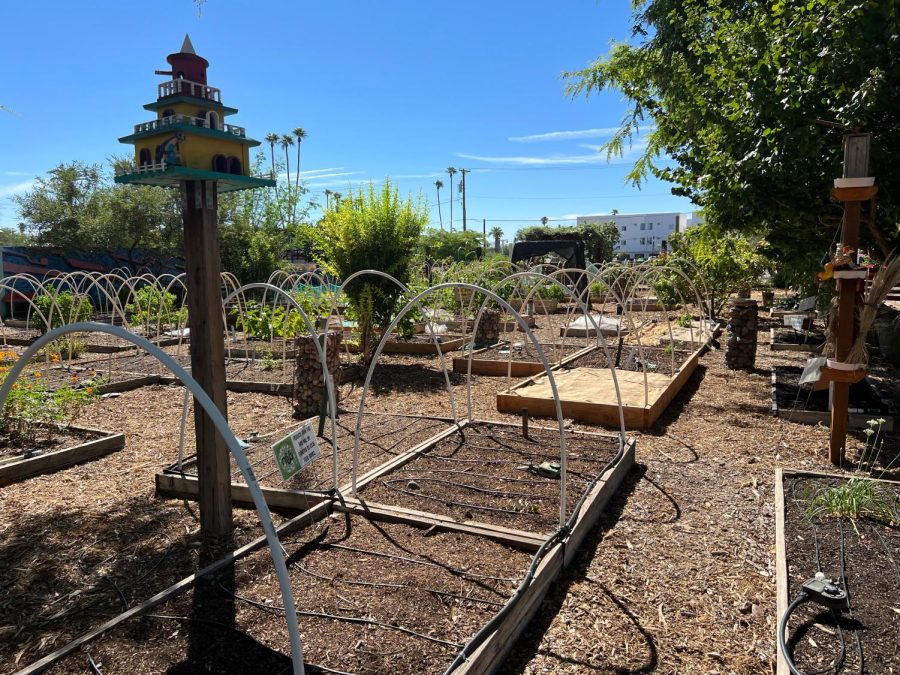Some Phoenix residents using community and personal gardens to save money—hot housing market, increased growth contribute to higher Valley food costs
Community gardens at the Mesa Urban Garden located at 212 E. First Ave. Mesa
September 25, 2022
The Valley’s hot housing market and intense population growth account for the majority of increase in the cost of living—a whopping 13% —which includes gas and food in the Phoenix metropolitan area.
The Federal Bureau of Labor Statistics (BLS) has factored in a blistering Phoenix housing boom along with the sheer number of people moving to the Valley in a report that shows that the Phoenix metropolitan area has had a higher, and faster percentage increase than other cities—including San Francisco, New York and Los Angeles.
Many longtime Valley residents are experiencing some shock over food price increases that they have not seen before. But it doesn’t mean that it costs more to live in Phoenix than the other large cities—in fact, the same study finds that overall, the main reason that people move to the Valley is the affordable cost of living and that the increases that are being felt now, are not comparable to the total cost of living in the other cities mentioned.
Still, some Valley residents are finding alternative ways to combat what feels like an overnight food cost increase, they’re opting for cheaper—and healthier—food solutions.
“I can barely afford to feed my family with the way food prices are right now,” said Buckeye resident and mother of three, Myra Jimenez.
City leaders and local farmers may have at least one solution to the problem—community gardens.
Community gardens are spaces where residents can rent a bed and plant their own garden, creating a cheaper food source for their families. For a low annual fee, the beds include soil, compost, water and tools. Some gardens even offer onsite support and gardening tips.
On average, a family of four will spend up to $1,200 per month on groceries with over half of that going toward produce. Community garden prices vary but are typically around $80 per year, plus the cost of seeds. This would mean a savings of $7,000 annually for a family of four.
While the savings are huge, the time investment needs to be considered. The gardens do not produce fruits and vegetables immediately. It can take several months to get a bountiful supply. This also doesn’t include daily attention to the garden.
Despite the time investment, community gardens are growing in popularity. A list of community gardens in Phoenix and surrounding areas can be found at phxgardening.com/phoenix-community-gardens.
A Mesa Urban Garden spokesperson added that there’s an extra bonus to community gardens as they supply a year-round need for Valley area food banks.
Laurie Blitz, the Garden Manager at Mesa Urban Garden tells Northeast Valley News that the community gardens help feed those in need.
“10% of the garden beds are used to give food to the United Food Bank,” Blitz said.
People are also turning to planting their own gardens at even greater savings and the convenience of growing from home in small, produce specific gardens. Yes, you can grow gardens in Phoenix according to www.phoenixgardening.com —the key is when—and what to plant— and the site offers tips on growing everything from cucumbers to melons to green beans.


